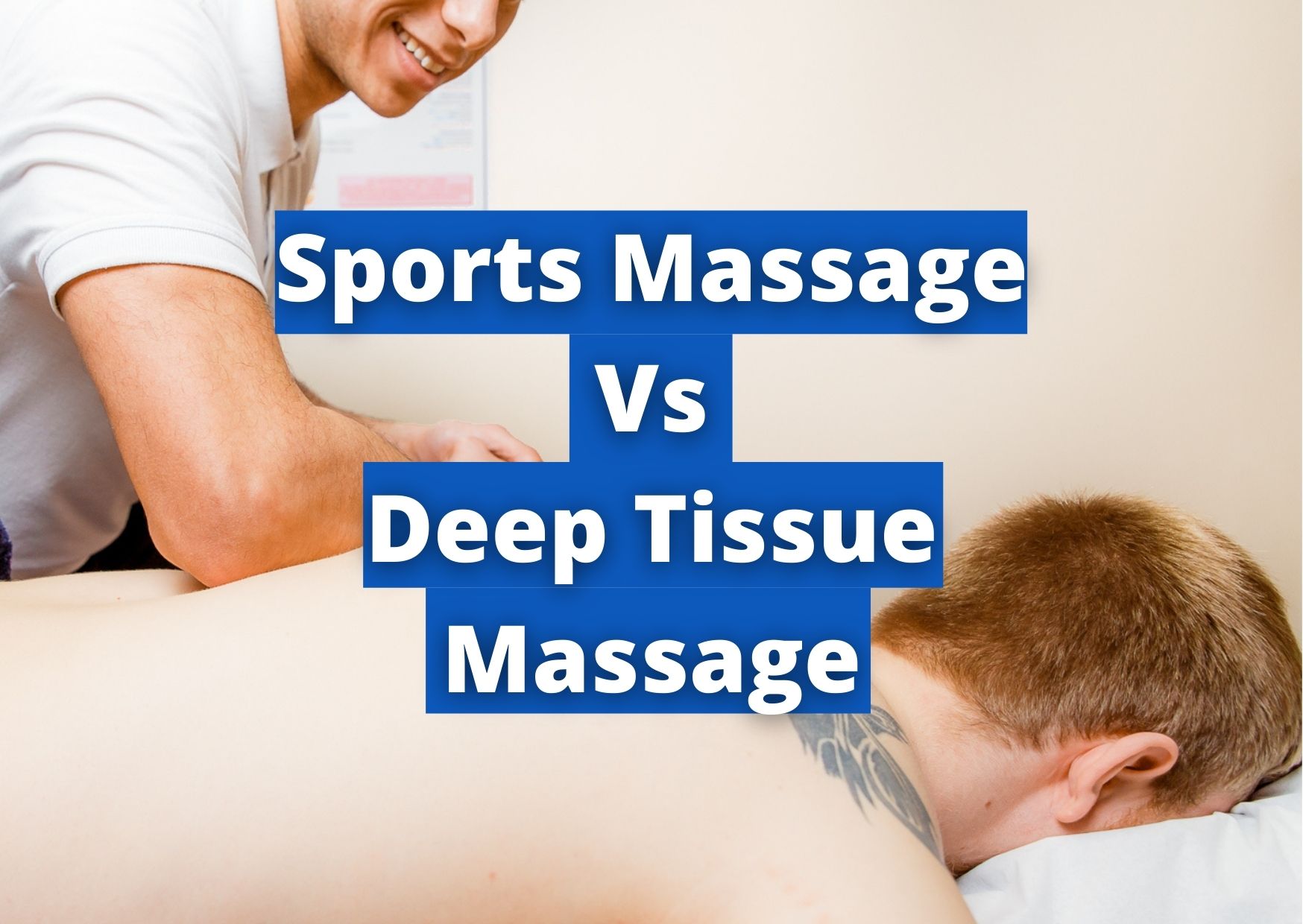Sports Massage vs Deep Tissue Massage
Ever wondered what the difference is between a sports massage and a deep tissue massage? Well, stay tuned!
Massage therapy relieves discomfort, relaxes the body. It also prevents injury by manipulating soft tissues throughout the body through touch and manipulation. Massage treatment comes in a variety of forms, each with its own set of advantages. Deep tissue massage therapy and sports massage therapy are two of the most frequent forms of massage.
What is a sports massage?

To treat the effects of tight muscles and muscular strain, a sports massage employs a combination of deep tissue massage and Swedish massage. From the outset, it was used on athletes to assist them with loosening up after a hard workout. Having said that, athletes and non-athletes alike can benefit from sports massage treatment on a physiological and psychological level.
Depending on the sport you engage in or the location of your discomfort, sports massage may include a fast-paced massage, stretching, and other muscle manipulation techniques. It may be customized to be utilized as a pre-workout stretch and warm-up opportunity, or as a post-workout massage to decrease stiffness and enhance flexibility. Massage is commonly used to release tension, but it may also be used as a warm-up for manipulative treatments of the spine or peripheral joints.
The relief of stiffness and discomfort is one of the primary goals of sports massage. Something which happens after a particularly strenuous workout. Nonetheless, this isn’t the only situation in which people experience muscle stiffness or discomfort. Long hours of sitting, bad posture, injuries, and inactivity are all contributors to these discomforts.
Benefits of a sports massage
- Reduced muscle tension, soreness, and discomfort.
- Improved performance due to increased range of motion.
- Reduced muscular stiffness and pain.
- Reduced post-injury healing time.
- Relaxation levels are higher, while physical and psychological stress levels are lower.
- Aids in the quantity and quality of sleep.
- Relieved headaches.
These advantages are mostly due to an increase in local blood circulation, which aids in the removal of toxins and waste materials that have accumulated inside the muscle. Fresh blood flow improves oxygen and nutrition content within the muscle simultaneously. As a result, muscle healing can be facilitated, and muscular tension can be reduced.
What is a deep tissue massage?

A deep tissue massage is a style of massage treatment that incorporates Swedish massage practices to target the deeper layers of muscle and fascia, as opposed to the superficial layers. It is also good for breaking up scar tissue and removing painful adhesions (bands of painful, stiff tissue).
The strokes used in deep tissue massage may feel similar to those used in Swedish massage treatment, however, deep tissue massage is not a stronger version of Swedish massage therapy. Deep tissue massages begin with a gentler touch to warm up the muscles and prepare them.
After that, a gliding pressure is provided down the muscle fibres’ length, and then across the muscle’s grain. Studies have indicated that applying deeper pressure to the muscles could help reduce chronic muscular tenseness. Most people utilize this form of therapy to relieve cramps, pains, stiffness, and tension, or just because they enjoy a strong pressure type of massage.
Therapists may utilise their fingertips, knuckles and hands, as well as elbows and arms during a deep tissue massage in order to reach the deeper tissues. It is possible that the massage therapist will urge you to breathe deeply while they work on tight regions. Even though you may have some tenderness after the massage, it should decrease within a few days. It may be beneficial to drink some water after the massage to assist flush out the metabolic waste.
Benefits of a deep tissue massage
Both your physical and emotional wellbeing will benefit from deep tissue massages. Massages have various advantages for the client, making it a convenient approach to unwind and address medical concerns. These advantages include:
- Stress reduction.
- Reduced muscle pain and tension.
- Reduced blood pressure and heart rate.
- Reduces arthritic symptoms by breaking up scar tissue and making mobility simpler.
- Muscles that have been damaged are rehabilitated.
So, what is the difference?
A deep tissue massage can help to relieve muscular tension and reduce stress. It can also help disintegrate knots in the muscles and improve blood circulation. Instead of focusing on a specific region of the body, a deep tissue massage is often performed as a full-body massage.
A sports massage, on the other hand, is a focused massage technique that targets specific regions of the body in need of rehabilitation or comfort. An athlete or someone who engages in frequent physical activity might benefit from sports massage.
Sports massage can assist with relieving discomfort in muscles and joints, as well as minimize swelling and jarring, for those who participate in any activity that demands repetitive motions. Athletes can also utilize sports massages to prepare their bodies and help in recuperation.
To treat muscular discomfort and stress, both deep tissue and sports massage utilize comparable strokes such as kneading, circular motions, and tapping. If a person suffers from repetitive injuries as a result of physical activity, they may benefit from sports massage.
A client receiving deep tissue massage, on the contrary, might be seeking a more broad relief from muscle discomfort and psychological stress.

